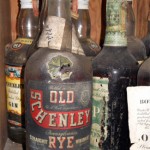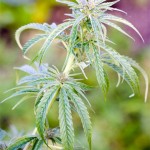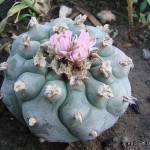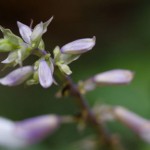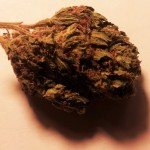Mature threads (and thus, threads involving intoxicants) are allowed at ‘Souls, provided one adheres strictly to the Mature Content procedures.
NOTE: This guide is ONLY intended for purposes relative to ‘Souls roleplaying. While this guide has been researched for realism, it in no way constitutes medical or scientific advice that can or should be ported to the real world.
Luperci are capable of creating and using various substances for recreational purposes. The three most common substances that can be produced or cultivated in eastern Canada are alcohol, tobacco, and cannabis. Still, manufacturing these substances for use is no easy task!
Common Substances
Alcohol
Human-made alcohol that has survived the apocalypse is usually still consumable to Luperci. Many types of alcohol grow better with age, but sometimes the fermentation process can go awry, so characters should take care to test small amounts of a given liquor prior to general consumption to ensure it hasn’t turned to vinegar (or worse).
Luperci are capable of some basic types of alcohol production, but many processes are advanced and relatively rare. Most Luperci-made liquor is rather crudely made and similar to moonshine alcohol.
Canines are more sensitive to alcohol than humans, and thus Luperci are particularly susceptible to alcohol poisoning. Binge drinking (consuming five or more drinks of alcohol) is likely to kill a Luperci. Remember that stomach pumps and other medical technologies are not available!
By and large, two processes are used when making alcohol.
- Fermentation
- The most common process involves gathering the drink ingredients and allowing them to ferment, the process by which sugars break down and reform into ethanol in the absence of oxygen. It is the ethanol that causes the intoxication of the drink.
- Different materials produce different drinks; grain, fruit, and vegetables can be used to make spirits. Grapes are specifically used for wine, and honey is used in mead. Beers are made through a mixture of barley mash and other grains.
- Distillation
- Distillation of fermented drinks creates what is known as “hard liquor” in North America. “Spirits” are distilled beverages without added sugar.
- Distillation is a method of separating mixtures. The process works due to differences in burning points and state changes (e.g., going from a liquid to a gas) of differing components. Ingredients are boiled together and allowed to separate. The resultant liquid is distilled into more potent alcohol.
- A determined Luperci could set up a “still,” which is an apparatus for distillation. Stills are generally made of copper, as the metal helps purify bad taste out of the alcohol. Primitive alembic stills are possible for Luperci.
Both processes require a lot of time, skill, and resources. One Luperci alone probably wouldn’t have the capacity to produce much alcohol — they’d need help. Larger batches of brew would require more materials, and some may be difficult to come by. Brewing is also a waiting game–it can take months or years before fermentation is complete!
Smokeable Plants
Both tobacco and cannabis are easily within the realm of possibility for cultivation for Luperci. Wild stocks of cannabis may survive as far north as eastern Canada. Tobacco may also grow wild in some areas, but it is usually cultivated. Plants are generally dried by sun or fire before smoking, a process that can take hours or months.
Almost all pre-apocalypse stocks of tobacco, cannabis, and other dried plant products have gone stale or rotten. Vacuum-packed, sealed packages of loose tobacco (e.g., for cigarette rolling machines or hand-rolled cigarettes) may still be usable, depending on the conditions of their storage. Even if preserved by airtight packaging though, this tobacco is likely to have degraded over the years.
Tobacco
Growth and cultivation of tobacco is largely a matter of ensuring that the plants survive beyond their seedling phase. When the plants have reached a proper “ripeness,” they are harvested and dried. There are various techniques, but the most common for Luperci would be to simply allow the plant to hang or sun-dry.
Tobacco lacks any medical use, but it can create a psychological and physical need. Repeated, long-term use of tobacco will have a variety of side effects on the user, including issues with blood pressure, breathing, and cancer. Luperci are not medically advanced enough to recognize these more severe threats to tobacco consumption. They might connect, for example, a smoker being slower and having less endurance than a non-smoker, but side-effects beyond this would largely be beyond their grasp.
Cannabis
Cannabis (more commonly known as marijuana and various other names) is a psychoactive plant that can be used for medicinal, spiritual, and recreational purposes. Cannabis can be somewhat more difficult to cultivate than tobacco, as plants should not be harvested until after their flowering stage, allowing more time for herbivores and pests to destroy crops.
Cannabis also has a more complicated drying technique, as it requires a dark and somewhat damp environment to “settle,” and each plant will dry at different rates. Inexperienced Luperci can expect to ruin crops during this phase, either by over or under drying their buds.
Other Substances
Possible Substances
Most intoxicant substances available to Luperci are natural, plant-based, and simply made. Intoxicants must grow wild, or be able to grow, in eastern Canada, or your character should have have a realistic way of obtaining the substance.
Substances that may not seem like drugs to us may have drug-like effects on characters — for example, sugar, tea, or coffee bean products for use as stimulants. Luperci would only irregularly include such substances in their diet, and would be far more sensitive to such substances.
Examples
Psilocyin mushrooms*, mescaline, peyote, opium (Papaver somniferum)*, doda, khat, ergine (Morning Glory seeds)*, salvia (Salvia divinorim)*, nutmeg, caffeine (coffee, tea, etc.)*, Indian tobacco (Lobelia inflata)*, kinnikinnick (Artcostaphylos uva-ursi)*, Dogwood tobacco (Cornus)*, ergot, coca leaf
*Plants found wild in eastern Canada, either as natives or via introduction
Impossible Substances
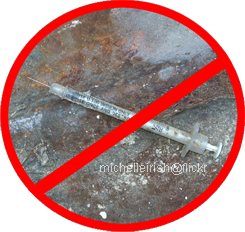
Creation of advanced chemicals or laboratory-synthesized substances is not possible to Luperci. Any human remnants of these substances will have degraded to uselessness. Note that there are natural alternatives to synthesized intoxicants (e.g., coca leaf chewing for cocaine; eating moldy bread instead of creating LSD) that are okay.
Examples
Cocaine, methamphetamine, heroin, LSD, MDMA, ketamine, dextromethorphan, xanax
